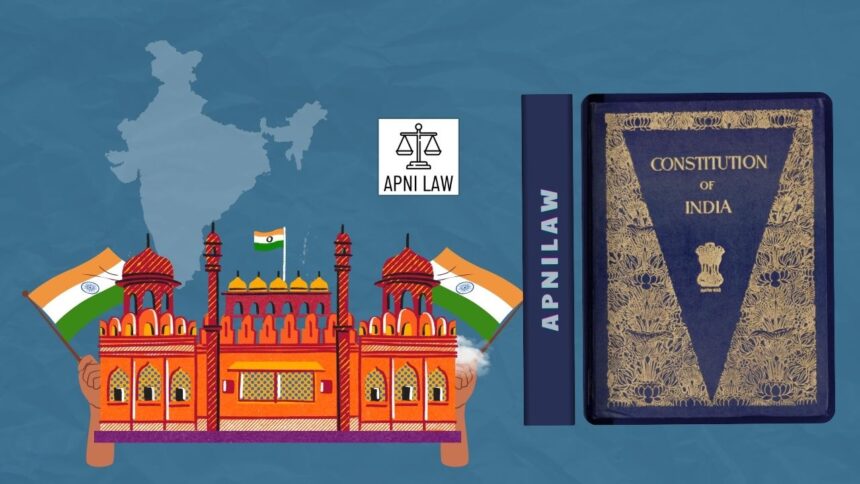The parliamentary system in India represents a framework of governance where accountability, responsibility, and representation stand as its central pillars. It draws inspiration from the British model but has been adapted to India’s own political, cultural, and constitutional needs. The system balances executive and legislative functions and ensures that the government operates with the confidence of the elected representatives. Understanding its features explains why this form was chosen and how it continues to guide India’s democracy.
What Defines the Dual Executive in India?
India follows the principle of dual executive. The system divides power between a nominal executive and a real executive. The President serves as the head of the state, acting mostly as a ceremonial authority. The Prime Minister, supported by the Council of Ministers, acts as the head of government and holds real executive power. This structure ensures that symbolic authority remains separate from political decision-making. While the President represents unity and continuity, the Prime Minister directs policies and administration, reflecting the will of the legislature.
How Does Collective Responsibility Function?
The parliamentary system in India emphasizes collective responsibility. The Council of Ministers, headed by the Prime Minister, is responsible as a whole to the Lok Sabha. This means that all ministers, regardless of their individual portfolios, share responsibility for government actions and policies. If the Lok Sabha passes a vote of no-confidence, the entire Council must resign. This feature strengthens accountability, as the government cannot remain in office without maintaining the confidence of the elected house.
Why Does the Parliamentary System Reflect Fusion of Powers?
Unlike the presidential system, which emphasizes a rigid separation, India’s parliamentary model demonstrates a fusion of executive and legislative powers. Members of the Council of Ministers are drawn from Parliament, and they function as both lawmakers and administrators. This fusion facilitates coordination between the two organs of government and prevents the paralysis that can occur when they operate in isolation. However, this arrangement also requires continuous vigilance by the legislature to keep the executive in check.
What Role Does the Majority Party Play?
The parliamentary system in India operates on majority party rule. The party or coalition that commands a majority in the Lok Sabha forms the government. Its leader becomes the Prime Minister, and ministers are usually chosen from among the majority party members. This system reflects democratic legitimacy, as the executive directly derives its authority from the elected representatives of the people. The system also allows for coalition governments when no single party secures a clear majority, ensuring inclusivity and broader representation.
Why Is Double Membership a Unique Feature?
The concept of double membership strengthens the connection between legislature and executive. Ministers are typically members of either the Lok Sabha or the Rajya Sabha. This dual role allows them to influence policymaking both in Parliament and in administration. It ensures accountability, as ministers must answer questions and participate in debates in Parliament while simultaneously executing government policies.
How Does Bicameralism Strengthen Representation?
The Indian Parliament has two houses, the Lok Sabha and the Rajya Sabha. The Lok Sabha represents the people directly through elections, while the Rajya Sabha represents the states. This bicameral structure balances the principle of popular sovereignty with federal interests. Bicameralism also allows for greater scrutiny of legislation, as bills must be debated and approved in both houses before becoming law. It ensures that diverse voices, including those of smaller states, find representation in the national decision-making process.
What Is the Significance of the Prime Minister’s Leadership?
The Prime Minister is the cornerstone of India’s parliamentary system. As the leader of the majority party, the Prime Minister guides policy, administration, and the overall direction of the government. The office coordinates the functioning of the Council of Ministers, manages relations with Parliament, and represents India internationally. The Prime Minister’s leadership ensures coherence in governance and provides a focal point for political accountability.
Why Does Secrecy of Procedure Matter?
Cabinet secrecy remains an important principle in India’s parliamentary framework. Ministers take an oath of secrecy before assuming office. Cabinet proceedings and deliberations remain confidential to protect sensitive information and ensure free discussion within the Council. This confidentiality allows ministers to speak openly during decision-making while maintaining a unified stance once policies are announced. Secrecy reinforces the principle of collective responsibility by ensuring that internal differences do not weaken government credibility.
How Does Judicial Review Ensure Checks?
Even though the parliamentary system in India fuses the executive and legislature, the judiciary remains independent. The Supreme Court and High Courts possess the power of judicial review, allowing them to examine laws and executive actions for constitutional validity. This feature acts as a check against misuse of legislative power and arbitrary decisions by the executive. Judicial review reinforces the supremacy of the Constitution and ensures that fundamental rights and democratic values remain protected.
Why Can the Lok Sabha Be Dissolved?
The Lok Sabha, as the directly elected house, can be dissolved before its five-year term ends. The President holds this power but acts on the advice of the Prime Minister. Dissolution often occurs when the government loses majority support and fresh elections are required to restore stability. This mechanism ensures that governance continues to reflect the people’s mandate and provides a democratic solution in times of political deadlock.
What Role Do Anti-Defection Laws and Party Discipline Play?
To maintain stability in India’s diverse political environment, anti-defection laws were introduced. These laws prevent legislators from switching parties for personal gain and ensure loyalty to the party’s mandate. Party whips also play an important role in enforcing discipline during voting. While these measures reduce political instability, they also limit individual freedom of legislators, raising debates on their impact on democratic expression.
Which Constitutional Provisions Define the Parliamentary System?
The Constitution of India explicitly defines the parliamentary framework at both the Union and State levels. Articles 74 and 75 deal with the President, Prime Minister, and Council of Ministers at the Centre. Articles 163 and 164 establish the Governor, Chief Minister, and Council of Ministers in the states. These provisions embed the parliamentary system firmly in India’s constitutional structure. They ensure that both Union and State governments function on the principle of collective responsibility and accountability to the legislature.
How Does the System Promote Democratic Governance?
The features of India’s parliamentary system collectively promote democratic governance. Dual executive ensures a separation between symbolic authority and real decision-making power. Collective responsibility fosters accountability. Fusion of powers strengthens coordination, while bicameralism widens representation. Leadership of the Prime Minister provides direction, and judicial review ensures constitutional safeguards. Together, these features create a system that values accountability, inclusiveness, and adaptability while preventing concentration of power.
For any specific query call at +91 – 8569843472
Conclusion
The parliamentary system in India is not just a replica of the British model but an adaptation that suits India’s diversity and democratic aspirations. Its features emphasize responsibility to the legislature, collective decision-making, and respect for the Constitution. By combining accountability with flexibility, it has enabled India to manage its vast population, diverse interests, and complex political landscape. The system continues to serve as the foundation of Indian democracy, balancing representation, stability, and constitutional values.







